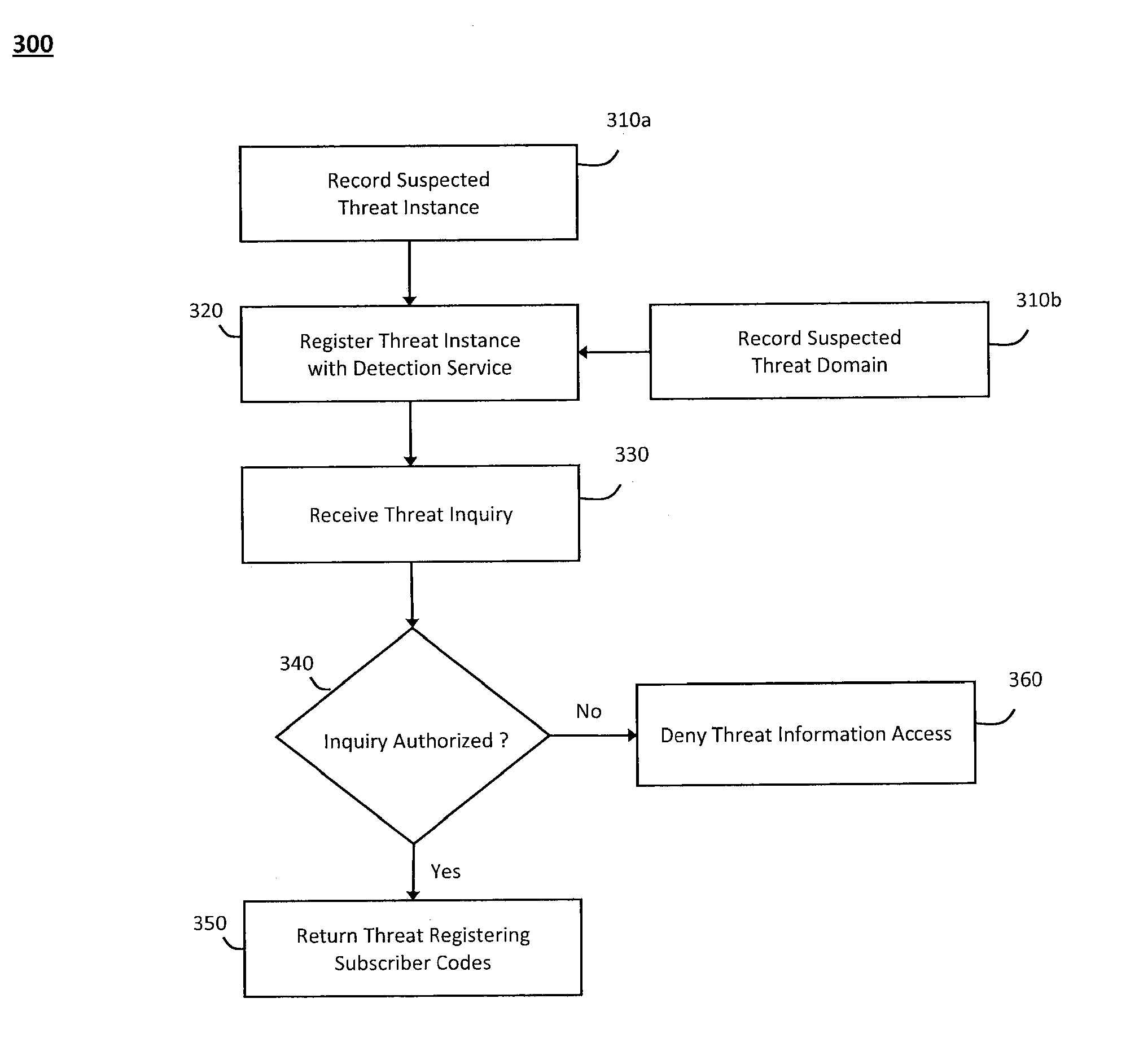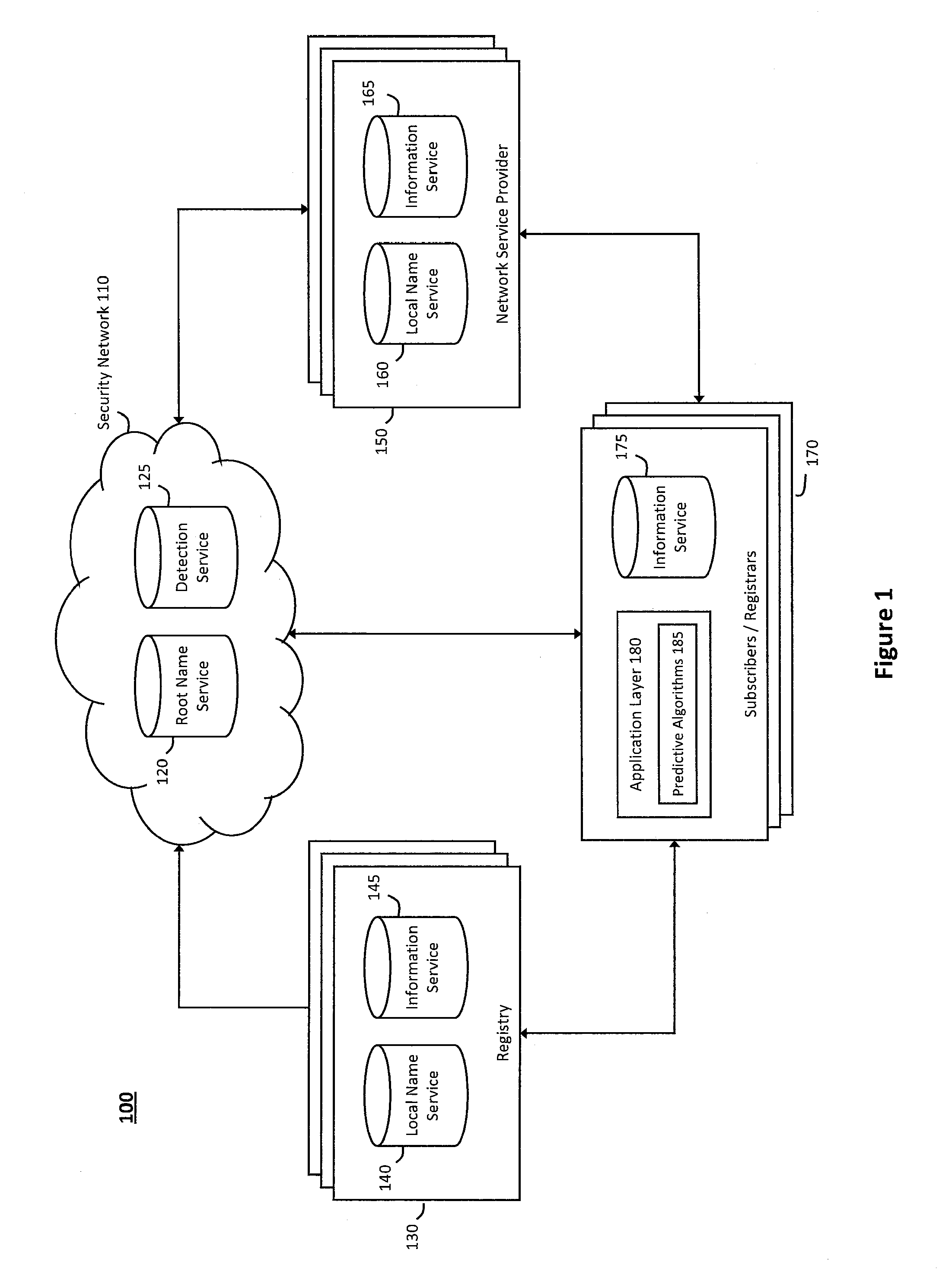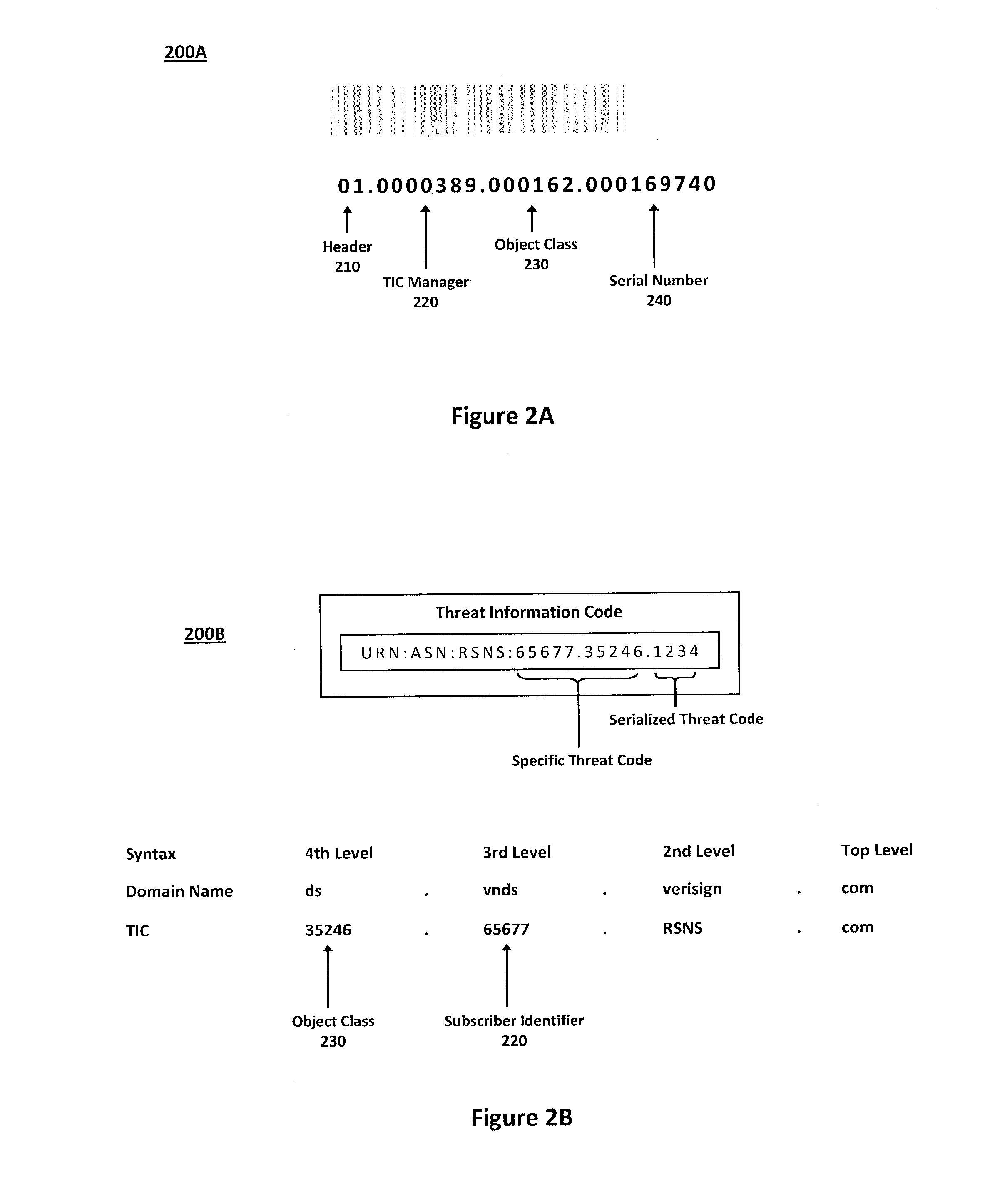Storing and accessing threat information for use in predictive modeling in a network security service
a network security and threat information technology, applied in frequency-division multiplex, unauthorized memory use protection, instruments, etc., can solve the problems of reducing the usefulness of hacking into any particular database associated with the security service, and achieve the effect of reducing competitive fears, legal and regulatory barriers, and quick and efficient routing of information
- Summary
- Abstract
- Description
- Claims
- Application Information
AI Technical Summary
Benefits of technology
Problems solved by technology
Method used
Image
Examples
Embodiment Construction
[0016]According to one aspect of the invention, FIG. 1 illustrates an exemplary system 100 for predictive modeling in a network security service. In particular, the system 100 illustrated in FIG. 1 may provide a scalable architecture that can model specific information relating to any threat (or potential threat) in a wide or global network and quickly and efficiently route the information relating to the modeled network threats (or potential network threats) to multiple entities that may request such information. For example, in one implementation, the scalable architecture in the system 100 may be based on the hierarchical Domain Name System (DNS) architecture, while information relating to any particular threat instances or potential threat instances may be serialized or otherwise modeled with threat instance codes that can uniquely identify the particular threat instances or potential threat instances. Accordingly, the threat instance codes may enable the system 100 to categoriz...
PUM
 Login to View More
Login to View More Abstract
Description
Claims
Application Information
 Login to View More
Login to View More - R&D
- Intellectual Property
- Life Sciences
- Materials
- Tech Scout
- Unparalleled Data Quality
- Higher Quality Content
- 60% Fewer Hallucinations
Browse by: Latest US Patents, China's latest patents, Technical Efficacy Thesaurus, Application Domain, Technology Topic, Popular Technical Reports.
© 2025 PatSnap. All rights reserved.Legal|Privacy policy|Modern Slavery Act Transparency Statement|Sitemap|About US| Contact US: help@patsnap.com



